NexusLink GPL-2000PT G.hn Wave 2 2000 Powerline Performance
Again, this is ~100 ft from the AV closet, but with a dedicated outlet that we are using. We also reverted the setup to use the ISP provided (Cox) all-in-one WiFi router. Our LibreSpeed local speed test node is on an Asustor Flashstor 12 Pro FS6712X. However, we also set up a Xeon D system to validate results.
Starting with the 2009 era Netgear Powerline AV results that the previous owner had been using:
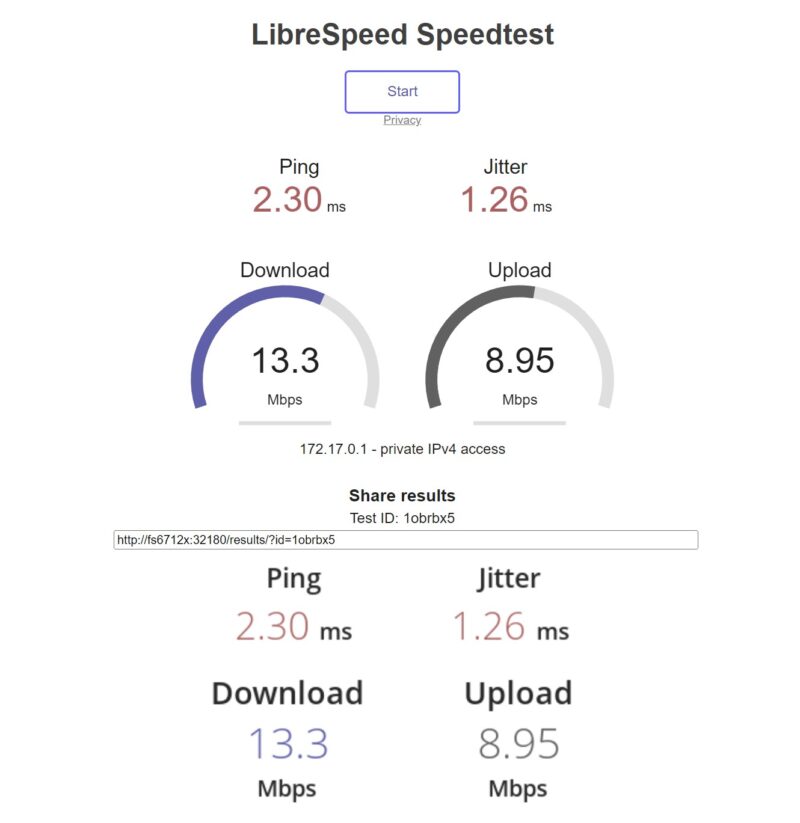
Moving up to the TP-Link AV2000 Powerline adapters, there was a jump in performance, but this is not keeping pace with other networking technology.
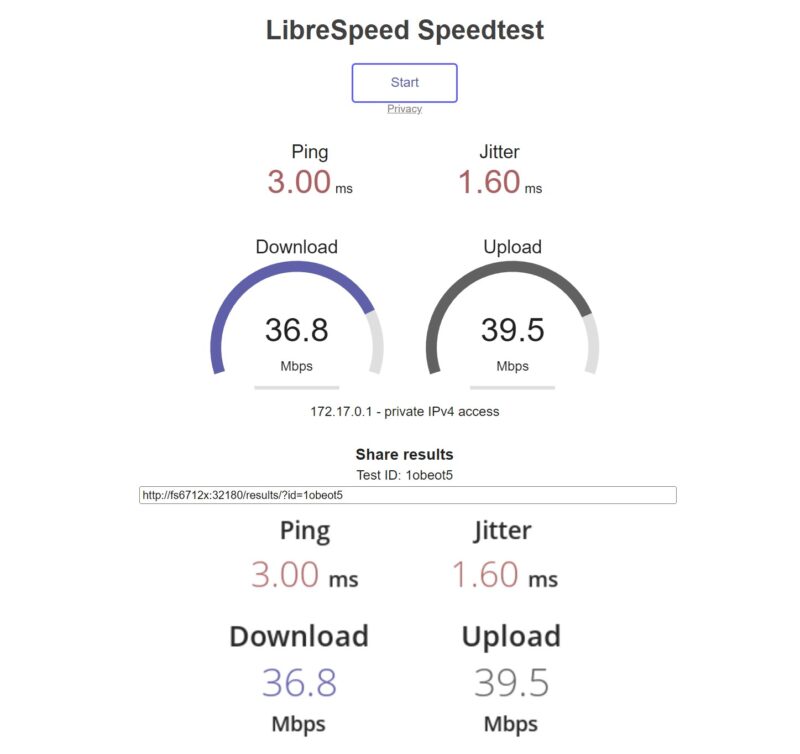
Moving to the new unit, we got 40Mbps down and 61Mbps up. The upload speed is a nice ~50% increase. We are also now around a 3x performance increase from 2009 technology to 2023 on the download side and about 6.8x on the upload side.
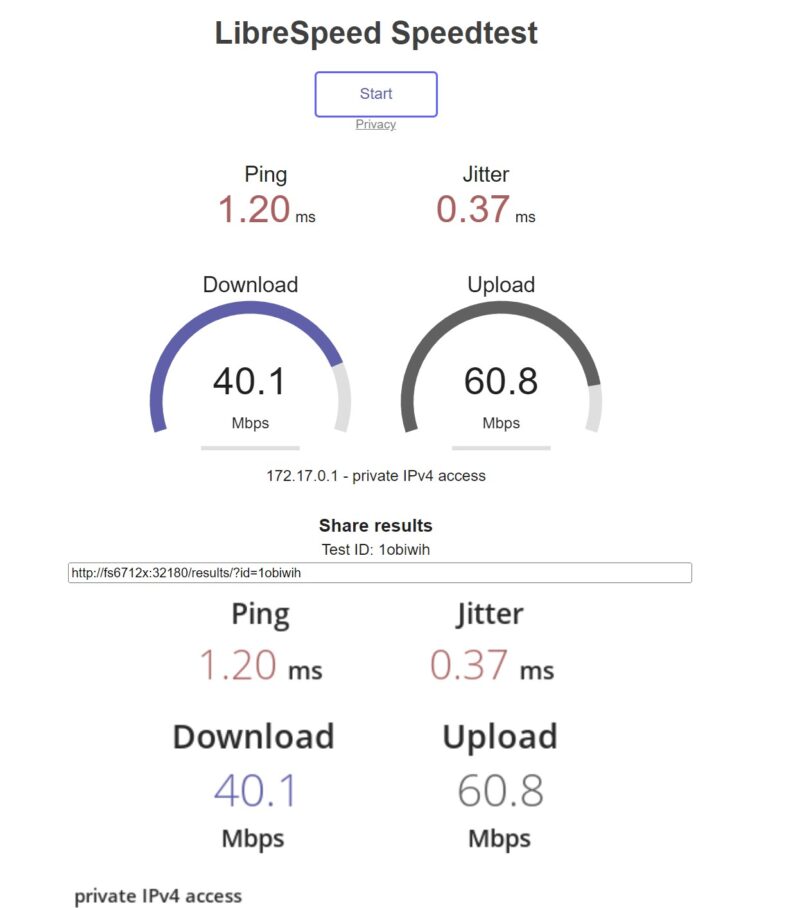
The more impressive part is the ping and jitter. That is an enormous upgrade over the TP-Link Powerline AV2000 units.
To show what this looks like versus WiFi, we are using a cheap Intel WiFi 6E card in the Intel Xeon w9-3495X ASUS workstation from the same desk as the ISP-provided WiFi router, and this is what we saw:
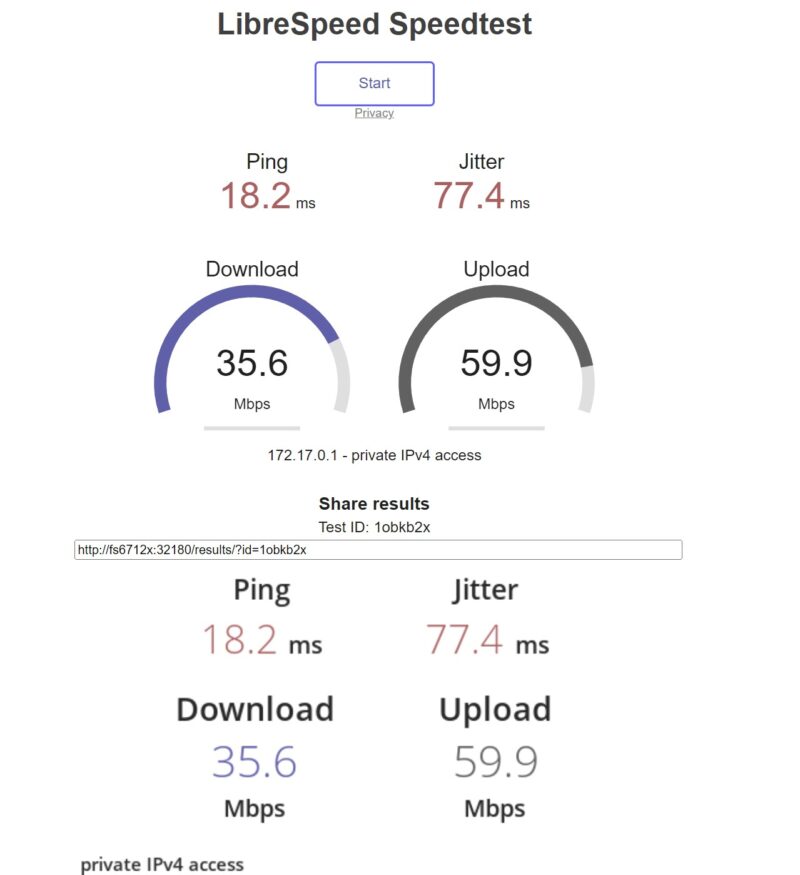
While the throughput was OK, the ping and jitter are fairly ugly in this range using WiFi. That is probably why the previous owner setup the Powerline networking. Of course, we are also at the distance where something even like a mesh WiFi solution would do wonders for throughput. Those mesh WiFi solutions are also not $65.
As a quick note, we also used the overclocked AMD Ryzen Threadripper 7980X system for both wired and wireless results. We wanted to validate that it was not a limitation of the endpoints, even though this is a very low speed. The results were within +/-3% on each run, so it seems not to be endpoint-influenced.
Final Words
Overall, the NexusLink GPL-2000PT units are a step in the right direction. Many will see the results above and think that WiFi is fine. For streaming where content is buffered, it probably is. If you wanted a more reliable connection then the G.hn adapters certainly provide that.
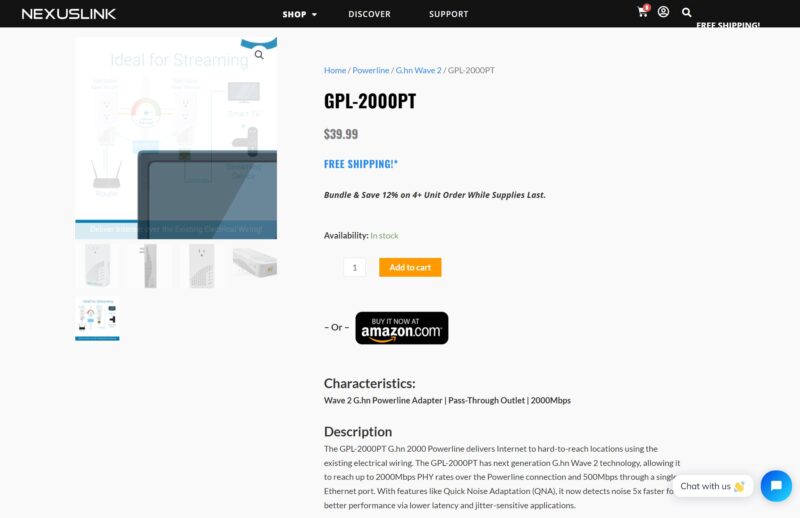
We got a lot of feedback that US wiring is not great, leading to noise and performance loss. That is fair. At the same time, these are not being sold with instructions on seeing if wiring is appropriate for Powerline networking. These are sold to folks who are often not technically minded and have no idea what their wiring situation is, let alone how it will serve as an avenue for Powerline networking. People expect a plug-and-play experience and we are getting less than 10% of the advertised speeds.
Now, on the other side of this, clearly running either copper or fiber would provide better performance. At the same time, these products are generally sold as the wired solution for
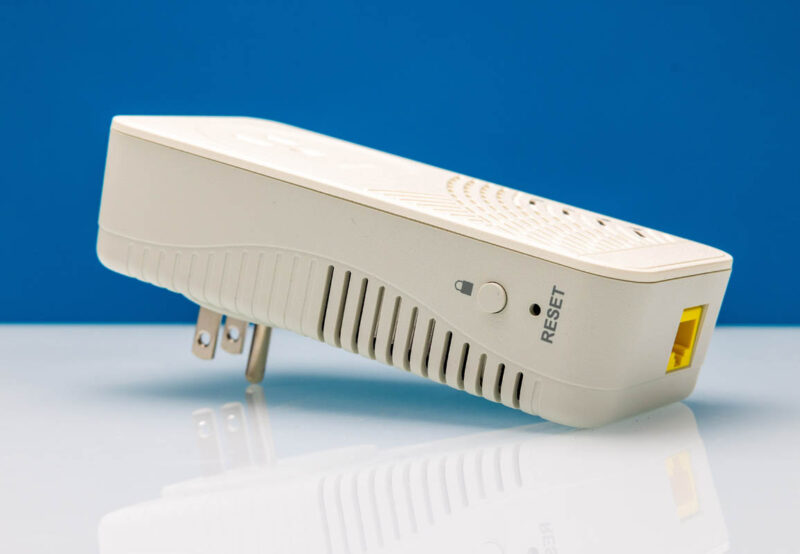
Does this change my opinion on Powerline? Absolutely not. The latency/ jitter performance is better than WiFi when using this G.hn Wave 2 line. At the same time, the performance at a range where WiFi struggles is not great. Sill, Powerline is usually easier to get running than MoCA for many, and WiFi has its limitations. The NexusLink GPL-2000PT G.hn 2000 Powerline is an adapter I like, albeit in a technology category that is falling behind.
Given what we have seen thus far, we have been scouting out other locations, such as in the STH Studio, and we might be doing what we did for our The Ultimate Cheap Fanless 2.5GbE Switch Buyers Guide and standardizing testing for a round-up of every adapter we can find.
Where to Buy
Here is an Amazon Affiliate link to the adapters we used. We may earn a small commission if you purchase through these links.
- NexusLink GPL-2000PT 2-pack Kit Amazon Affiliate Link
- NexusLink GPL-2000PoE Single Amazon Affiliate Link
- TP-Link AV2000 Amazon Affiliate Link




Using the same wave 2 adapters in my 1950s home that has had numerous additions and renovations over the years, multiple fuse panels, etc. A real hodgepodge of wiring. I get around 300 mbps across the house on g.hn wave 2. Not sure why your house has such poor performance.
It’s obvious by now you need an electrician to check your house thoroughly, something is obviously very very wrong…..
There seems to be assumption here that his wiring is nonstandard or wrong.
Reading the articles shows the reality is likely much more simple. The other side of his house he is connecting to is on the other side of the panel, or to say more exactly, the other side of the transformer.
This is the large and known issue with power line networking. You have to have luck that your outlets are on the same transformer leg.
If you are not, you are going to lose speed from the transformer even if it is on the light pole outside your house. It will be worse if you have a community wide transformer that is down the block.
Also, this is mainly an American 110v issue. Countries running 220v or 240v do not have a split transformer and the whole house is reasonably used by power line networks.
If you’re saying it’s the wiring’s fault you’re part of the problem. This is e-x-a-c-t-l-y what so many people experience with this tech. I don’t think it’s like 10% or less. It’s like 50%. I do SMB and high $ home installations and we see more than half of our new clients that tried powerline are having massive issues like this. Dozens of clients a year.
Good on STH for highlighting this and following up with g.hn.
Noise sources (mainly switching power supplies) on the same circuit or worse at the same outlet tend to knock the speed down quite a bit. The other speed killer is modern AFCI/GFCI circuit breakers. Older homes have an advantage here.
I used AV1200 adapters for years and got a fairly steady 60Mbps in each direction. They’re generally not a good replacement for Wi-Fi but for select use cases I’m happy they exist.
The thing that people miss about powerline vs. WiFi is that WiFi is a zero-sum game. If you can offload some fixed loads from even your 6E network, that seems like a great plan, right?
My laptop, tablet, phone, game player? Need WiFi. My media player? Right now it runs on WiFi because I don’t have a cat5 drop handy but especially since I recently upgraded to 4k video, it’s just a wifi drain for no good cause. (Can I find my Amazon Fire Stick USB to 100baseT adapter? No so I’ll have to buy a new one…)
But I think there’s a real role for this technology as an alternative to WiFi when you can’t add new Cat5E drops easily.